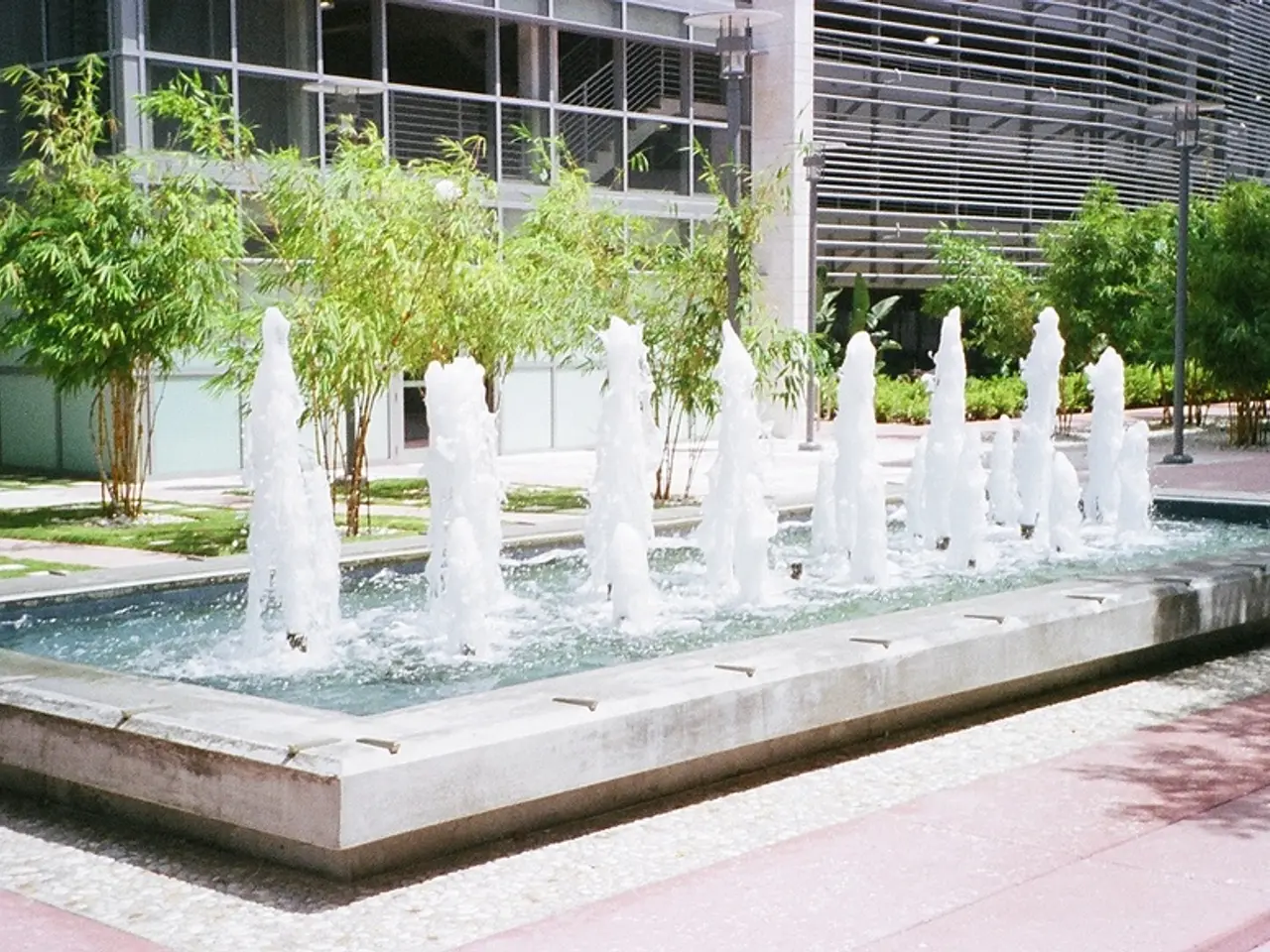Debunking Misconceptions: Thermal Systems - Heat Pumps Can Function Efficiently in Older Homes
In the heart of London, an innovative solution is breathing new life into an old building, proving that modern environmental technology can harmoniously coexist with historical conservation. The Sutton Dwellings estate, built in 1913, has recently undergone a transformation, with the installation of a ground source heat pump (GSHP) system.
The project, led by Kensa, has seen 81 flats in the estate equipped with GSHPs, replacing the traditional coal fireplaces and later gas heating systems. The renewable heat energy for the pumps is sourced from 27 boreholes drilled beneath the estate.
Stuart Gadsden, Commercial Director at Kensa, claims that this project is a testament to the effectiveness of heat pumps in older buildings, cities, and where space is limited. The primary outcome of the project is expected to be the benefits felt by residents, who will receive low-cost, low-carbon heating and hot water.
GSHPs operate by transferring heat to and from the stable ground temperature, achieving coefficients of performance (CoPs) typically between 3 and 6. This means they deliver 3-6 units of heat per unit of electricity consumed—much more efficient than traditional electric heaters or gas boilers. This makes them a future-proof solution for retrofitting older urban buildings that may currently rely on less efficient heating systems.
When retrofitting complex city structures, several benefits arise. There is a significant reduction in carbon footprint and energy consumption relative to fossil fuel systems. GSHPs can work well with underfloor heating or suitably sized radiators, although existing heating elements may need to be upgraded or supplemented to achieve effective heat distribution at the lower operating temperatures of heat pumps. Preservation of heritage aesthetics is also a benefit, as GSHPs can be installed with minimal visual disruption compared to traditional boilers and radiators. Operational cost savings over time, due to higher efficiency and lower maintenance needs, are another advantage.
However, challenges in retrofitting involve ensuring sufficient space and structural capacity for ground loop installation or boreholes, assessing and potentially upgrading electrical infrastructure, and designing bespoke systems tailored to each building’s unique heat loss characteristics and heritage constraints.
The project in The Sutton Dwellings estate could serve as a blueprint for other social housing providers with properties that need decarbonizing. This initiative is also seen as a myth-busting one for renewable heating, particularly ground source heat pumps. The heat pumps are small enough to be housed inside a cupboard in each flat, causing no impact on the exterior of the property.
Kensa is continuously seeking new innovations and solutions to improve lives and decarbonize heat in millions of UK buildings. This project, which is part of a regeneration project by Clarion Housing, began in 2019. Kensa describes the project as an example of how history and modern solutions can work seamlessly in tandem.
- The Sutton Dwellings estate's regeneration, led by Kensa, has proven that modern environmental technology, like ground source heat pumps (GSHPs), can harmoniously coexist with historical conservation in old buildings.
- The installation of 81 GSHPs in the Sutton Dwellings estate replaced traditional coal fireplaces and gas heating systems, sourcing renewable heat energy from 27 boreholes drilled beneath the estate.
- The benefits of GSHPs, as demonstrated in the Sutton Dwellings estate project, include lower operational costs, lower carbon footprint, and minimal visual disruption compared to traditional boilers and radiators.
- Environmental-science and technology innovations, like the implementation of GSHPs, can contribute significantly to industry's endeavors in finance, energy, and climate-change mitigation, especially in retrofitting older urban buildings.
- Continuous innovations and solutions, such as the GSHP system, are being sought by Kensa to improve lives, decarbonize heat in millions of UK buildings, and bridge the gap between historical conservation and modern technology.




